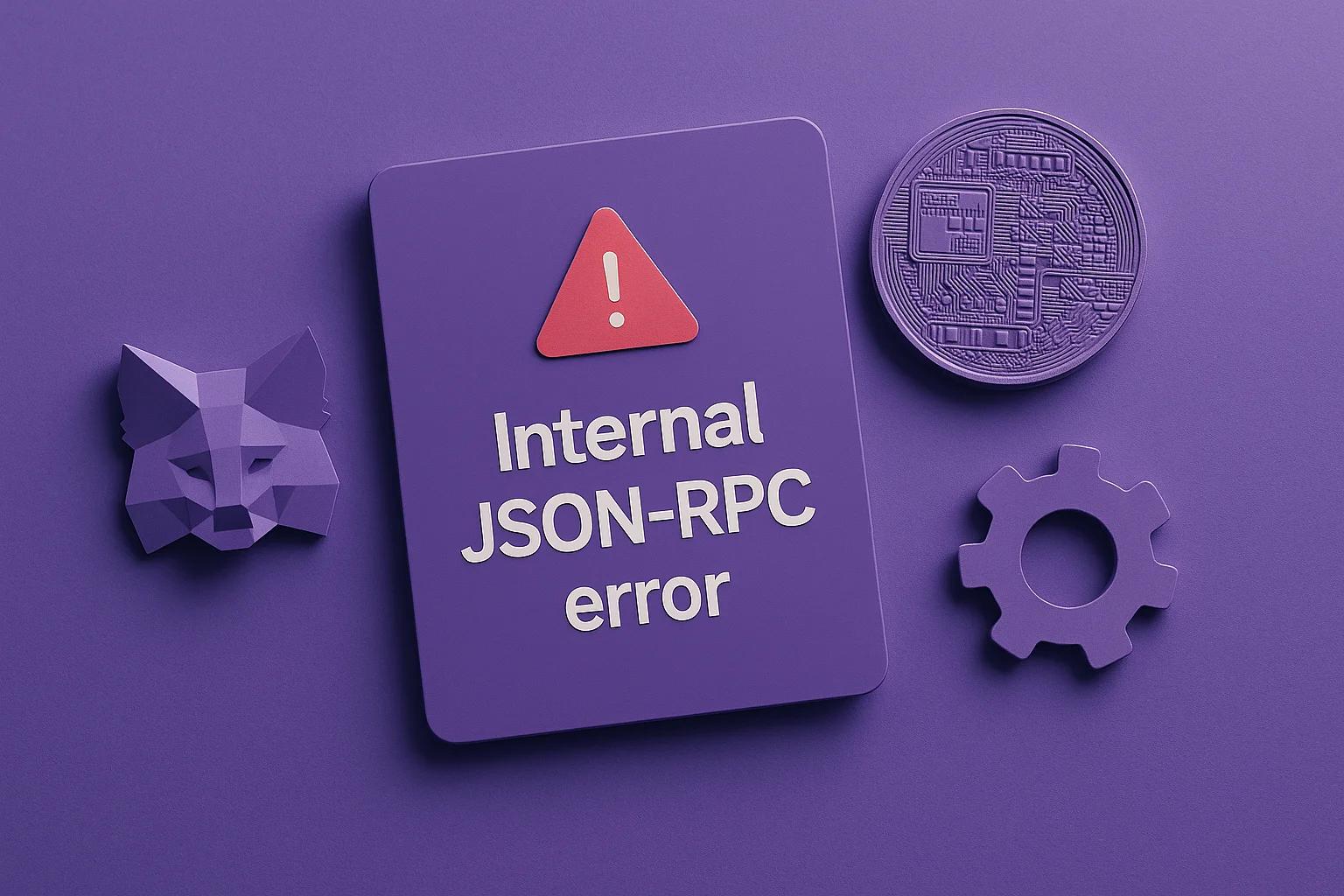Market Cap vs. Circulating Supply: What You Need to Know
When exploring cryptocurrency options, you might notice terms like market cap vs. circulating supply. These concepts can help you quickly gauge a coin’s popularity, price movement, and overall growth potential. Market capitalization reflects a cryptocurrency’s total value, highlighting its strength and position in the financial world. On the other hand, circulating supply shows how many coins are currently […]

When exploring cryptocurrency options, you might notice terms like market cap vs. circulating supply. These concepts can help you quickly gauge a coin’s popularity, price movement, and overall growth potential.
Market capitalization reflects a cryptocurrency’s total value, highlighting its strength and position in the financial world. On the other hand, circulating supply shows how many coins are currently available, affecting how the price responds to demand.
Grasping these basics can offer a fresh perspective on market trends and investment decisions. As a result, this article could be your cornerstone, helping you understand why the market cap and circulating supply relationship matters and how they could guide your next move in crypto.
Market Cap vs. Circulating Supply at a Glance
| Aspects | Market Cap | Circulating supply |
| Purpose | Market Cap shows the overall value of a cryptocurrency. A high market cap usually means the coin is popular and trusted by many people. | Circulating supply is the number of coins people buy, sell, or trade. This amount influences the coin’s price based on demand. |
| How It’s Calculated | Market Cap = Current Market Price x Circulating Supply. This means it depends on the coin’s price and the number of coins available. | Circulating supply is the total number of coins, either mined or released, minus any burned or locked away. |
| Impact on Price | A coin with a large market cap usually has more stability. People see it as a safer choice, and its price doesn’t change as wildly. | With fewer coins in circulation, the price can rise quickly if people want to buy it. More coins means that prices may drop if there isn’t enough demand. |
| Usefulness for Investors | Market Cap helps investors see how valuable and established a cryptocurrency is, like checking if it’s trusted in the crypto market. | Circulating supply is more about a coin that might become more scarce and valuable over time or, if there are too many coins, lowering its price. |
| Relation to Maximum Supply | Market Cap can grow if the coin’s price and circulating supply increase. | The circulating supply can only exceed a fixed limit (maximum supply), the number of coins that can exist. |
Market Cap vs. Circulating Supply: What Are They?
Two key terms help us understand a coin’s value and availability: market cap and circulating supply. Although they might sound technical, these ideas are simple and give a quick sense of a cryptocurrency’s size and market activity.
What is Market Cap?
Market capitalization, or market cap, represents the total value of a cryptocurrency. To calculate market cap, you multiply the current market price of one coin by the circulating supply—the total number of coins available for trading. Thus, the market cap is a widely used metric for measuring the scale of a cryptocurrency project.
- Large-cap cryptocurrencies (such as Bitcoin) are typically more stable, with a higher total dollar value.
- Mid-cap and small-cap cryptocurrencies can offer more growth potential but may also have greater risk.
Moreover, market cap gives investors a sense of a cryptocurrency’s position in the financial world, making it easier to compare different crypto projects.
What is the Circulating Supply?
Circulating supply refers to the number of coins or tokens currently available for public trading. This count includes only coins that are actively in circulation and excludes those that may be locked or reserved.
- Influences the coin’s price based on supply and demand—if fewer coins are available and demand is high, the price tends to rise.
- It differs from the maximum supply, the total number of coins that could exist. For instance, Bitcoin’s circulating supply is about 19.7 million coins, with a maximum supply of 21 million.
Market Cap vs. Circulating Supply: Why Do They Matter?
Market cap and circulating supply are more than numbers; they’re vital indicators that help investors understand a cryptocurrency’s market presence. Together, these metrics reveal a coin’s overall value and how its price might respond to changes in supply and demand. Here’s why they’re essential:
1. Understanding Value and Popularity
Market cap, or cryptocurrency market cap, reflects the overall value of a crypto project. The current price of a coin multiplied by the total supply gives a snapshot of its size and reputation in the market.
For example, Bitcoin’s market cap, one of the highest, highlights its status as a trusted cryptocurrency. Generally, a higher market cap means more people believe in the project, which can offer confidence to new investors.
2. Assessing Future Growth and Stability
The market cap and circulating supply can signal a cryptocurrency’s risk and growth potential. For instance, a project with a large market cap might appear more stable, whereas smaller-cap cryptos could show higher volatility yet offer opportunities for quick growth.
A larger circulating supply may suggest the coin’s price won’t skyrocket as quickly due to the higher number of available coins. In contrast, a limited supply can create a scarcity effect, boosting value as demand increases.
3. Liquidity and Ease of Trading
A higher market cap usually translates to better liquidity, especially with a sizeable circulating supply. Liquidity is significant because it allows investors to buy and sell more easily without drastically affecting the current price.
Thus, projects with a higher market cap and more available coins are typically easier to trade, making them appealing to new and experienced traders.
4. Scarcity and Price Control
Circulating supply is closely tied to the concept of scarcity. A limited or maximum supply restricts the total number of coins, creating a scarcity that often drives up value over time.
Bitcoin, for instance, has a maximum supply of 21 million coins, which has helped maintain its value over the years. Thus, knowing a coin’s total and maximum supply helps investors understand whether its price may grow or drop with future releases.
5. Insight into Market Trends and Investment Confidence
A cryptocurrency’s market cap can influence people’s feelings about investing. Cryptocurrencies with a higher market cap tend to attract investors seeking stability.
Meanwhile, those with lower caps may appeal to risk-tolerant investors willing to bet on their future potential. Observing these market trends can guide investors in shaping a balanced crypto portfolio based on their goals and tolerance for risk.
Circulating Supply vs. Market Cap: Contributing Factors
When it comes to the factors that influence a cryptocurrency’s market cap and circulating supply, each impacts the coin’s value and market perception:
- Price Fluctuations: The current market price directly affects the market cap. Any shift in price, up or down, immediately influences a cryptocurrency’s overall value.
- Mining and Staking: New coins generated through mining or staking add to the circulating supply, potentially impacting scarcity and price.
- Token Burns: Projects may burn tokens (destroy them) to lower the circulating supply, creating scarcity, which can boost value if demand remains steady.
- Investor Sentiment: Positive news or developments can attract investors, raising demand and market cap, while adverse events might lower them.
Tips for Tracking Market Cap vs. Circulating Supply
Tracking market cap and circulating supply can help investors make smarter decisions. But here are some tips to stay informed:
- Use Reliable Crypto Tracking Platforms: Websites like CoinMarketCap, CoinGecko, and MarketCapOf are excellent for real-time data on market cap and circulating supply.
- Watch for Project Announcements: Project updates on token burns, supply releases, or staking events can change these metrics and impact price.
- Analyze Historical Trends: Checking past data provides context, helping you anticipate how these metrics might respond to market events.
- Set Alerts for Key Changes: Use tools that send notifications for noteworthy changes in price or supply, enabling quicker decision-making.
FAQ
How does circulating supply affect a coin’s price?
A lower circulating supply can increase prices if demand remains strong due to increased scarcity.
Can the market cap change without new coins being issued?
Yes, the market cap can fluctuate with changes in the coin’s price, even if the circulating supply remains constant.
Why is tracking these metrics important?
They provide insights into a cryptocurrency’s market position, liquidity, and potential for future growth.
Does Circulating Supply Affect Market Cap?
Yes, the market cap depends on circulating supply. It’s calculated as Market Cap = Current Price x Circulating Supply. So, assuming the price stays the same, if the circulating supply changes, the market cap will change, too.
What is Market Cap and Price?
Market Cap: Total value of a cryptocurrency, calculated by multiplying price with circulating supply.
Price: The cost of one unit of the cryptocurrency. While price shows the cost per coin, market cap reflects the overall value in the market.
Final Thoughts
Market cap vs. circulating supply are simple ideas that can make a big difference in understanding cryptocurrency. By looking at these two things together, you better understand how stable or risky a cryptocurrency might be. They also reveal if a coin’s value might grow over time or if there’s enough demand to support its price.
Understanding them can help you make smarter choices, whether you are just exploring or ready to invest in digital assets. These metrics give you confidence in comparing coins and spotting the ones that best match your goals.



